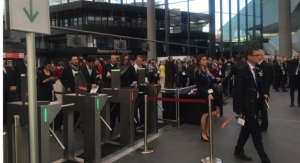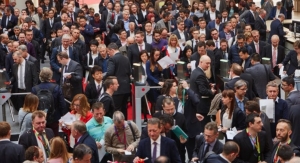02.08.17
The transportation industry is always looking for ways to enhance sustainability and reduce its carbon footprint. Vehicle manufacturers use lightweight construction concepts to reduce fuel consumption and emissions. Railway system operators contend that the mass transportation of people and goods by rail is significantly more sustainable to begin with. But these factors are not enough in the long run.
Polish railway vehicle manufacturer Newag SA broke new ground in resource-efficient coatings when he coated two diesel locomotives with a paint based on renewable resources. Lankwitzer Lackfabrik of Berlin supplied the coating, which it developed in close collaboration with Covestro using the biobased coating hardener Desmodur eco N 7300.
“With a new product, a coating manufacturer’s first priority is, of course, to fulfill the customer’s specifications,” says Mateusz Fedko, project manager at Newag. “If the coating offers added value on top of that, as is the case here with the renewable raw materials, it gives us a very good opportunity to set ourselves apart from the competition.”
The project illustrates how far Covestro has come with its biobased coating hardener, which it will be presenting at the 2017 European Coatings Show in Nuremberg. “The coating formulated with this product performs just as well as a conventional coating systems, but uses primarily renewable resources,” says Julia Hellenbach, marketing expert for the transportation sector at Covestro’s Coatings, Adhesives, Specialties business unit. “Seventy percent of the carbon in this polyurethane raw material comes from biomass.”
At Newag’s headquarters in Poland, the EVOClear 294 / PH 94-0000 coating system from Lankwitzer was sprayed just like a standard clearcoat. Joint testing conducted by Lankwitzer Lackfabrik and Covestro confirms the high performance of the clearcoat: It is on par with polyurethane systems of petrochemical provenance.
The abrasion resistance and gloss stability of the coating were even 70 percent higher compared with standard coatings, as the partners demonstrated with the Amtec Kistler car wash test. Next they are planning a joint long-term weathering test.
The biobased clearcoat also fulfills the specific requirements of the railway vehicle industry, of course. For example, it displays very good resistance to cleaning agents, particularly those used to remove graffiti (DB standard “Blatt 39”), and to alkaline agents, hydrochloric acid and phosphoric acid. Tests confirm that graffiti can be removed easily and gently.
Given the results so far, Michael Voxbrunner of Lankwitzer Lackfabrik is optimistic about future developments: “I am certain this biobased clearcoat will also create value for our customers in other industries.”
Polish railway vehicle manufacturer Newag SA broke new ground in resource-efficient coatings when he coated two diesel locomotives with a paint based on renewable resources. Lankwitzer Lackfabrik of Berlin supplied the coating, which it developed in close collaboration with Covestro using the biobased coating hardener Desmodur eco N 7300.
“With a new product, a coating manufacturer’s first priority is, of course, to fulfill the customer’s specifications,” says Mateusz Fedko, project manager at Newag. “If the coating offers added value on top of that, as is the case here with the renewable raw materials, it gives us a very good opportunity to set ourselves apart from the competition.”
The project illustrates how far Covestro has come with its biobased coating hardener, which it will be presenting at the 2017 European Coatings Show in Nuremberg. “The coating formulated with this product performs just as well as a conventional coating systems, but uses primarily renewable resources,” says Julia Hellenbach, marketing expert for the transportation sector at Covestro’s Coatings, Adhesives, Specialties business unit. “Seventy percent of the carbon in this polyurethane raw material comes from biomass.”
At Newag’s headquarters in Poland, the EVOClear 294 / PH 94-0000 coating system from Lankwitzer was sprayed just like a standard clearcoat. Joint testing conducted by Lankwitzer Lackfabrik and Covestro confirms the high performance of the clearcoat: It is on par with polyurethane systems of petrochemical provenance.
The abrasion resistance and gloss stability of the coating were even 70 percent higher compared with standard coatings, as the partners demonstrated with the Amtec Kistler car wash test. Next they are planning a joint long-term weathering test.
The biobased clearcoat also fulfills the specific requirements of the railway vehicle industry, of course. For example, it displays very good resistance to cleaning agents, particularly those used to remove graffiti (DB standard “Blatt 39”), and to alkaline agents, hydrochloric acid and phosphoric acid. Tests confirm that graffiti can be removed easily and gently.
Given the results so far, Michael Voxbrunner of Lankwitzer Lackfabrik is optimistic about future developments: “I am certain this biobased clearcoat will also create value for our customers in other industries.”





